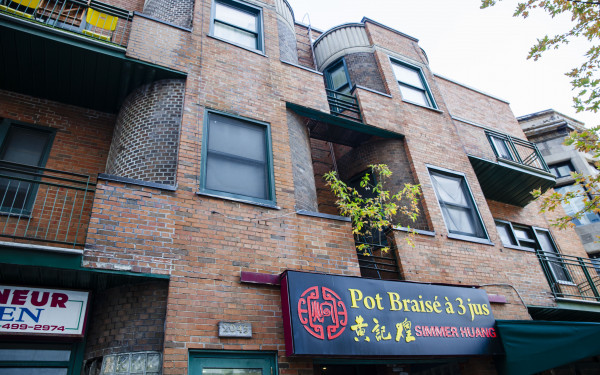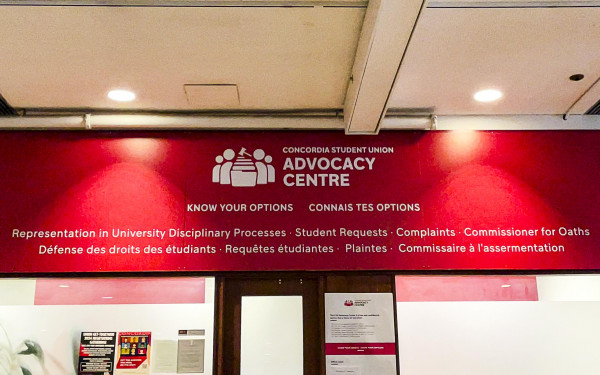Concordia University owns more than $1.4 billion in real estate property
The university currently has over 70 properties in its portfolio
Concordia University's real estate portfolio is now worth over $1 billion and according to the Concordia website, the university owns at least 80 buildings overall.
Using publicly available data through the City of Montreal, The Link has identified roughly 70 addresses owned by the university, valued at approximately $1,465,910,302.
Of these addresses, nine buildings have been purchased but are not currently in use. They are worth approximately $37,857,800 combined.
According to Concordia economics professor Moshe Lander, the purchase of property is a big expense but a necessary one.
“In general, any university is going to have facilities and faculty as its two biggest costs,” Lander said. “Take your pick which one's bigger than the other, but that's always the case.”
Lander also explained that property pricing is determined by supply and demand, and one thing that has greatly impacted the value of real estate across the country is the COVID-19 pandemic.
As such, property evaluations are not always equivalent to the price paid by the university to purchase the buildings.
Additionally, some of the buildings–like the Henry F. Hall Building and much of the Loyola campus–were owned by Concordia's predecessors, Loyola College and Sir George Williams University.
Others, like the Faubourg Building, were purchased more recently. Concordia bought the tower in 1997 and, according to The Link archives, it later paid between $43-50 million for the former mall adjoining the tower around 2011. They spent an additional “$4.5 million for the fifth and sixth floors” in 2012.
The Faubourg building was purchased despite student outcry, and after Concordia tried to convince the Concordia Student Union to purchase and use it as a student hub. The building is currently occupying at least two addresses that have a combined value of $71,089,600.
Some properties owned by Concordia previously had other buildings attached to them—like the York Theatre, which was purchased by Concordia in 1998, torn down in 2001 and replaced with the Engineering and Visual Arts Building in 2005.
While there are no current public plans to demolish additional buildings, it could be a future possibility as the university expands. A map outlining Concordia’s current buildings, both owned and rented, shows proposed space use and building expansion, including a west wing on the Grey Nuns (GN) Building.
Lander explained that a major deciding factor would be the cost associated with demolition versus maintenance of the current structures.
“They have to make that decision based on what they think is the best bang for their buck,” Lander said.
He explained that another hurdle is often where to get the money, and how the calculations have changed with COVID-19 and the Quebec government’s more recent attack on English universities.
According to Lander, Concordia is most likely holding onto the properties while it assesses its future needs. If its plans don’t work out or aren’t feasible and the market goes up, it can sell and recoup what it paid for the properties.
More recent purchases beginning in 2018 include six buildings on Guy St. across from the GN Building. The buildings include locations of former restaurants Bar B Barn and Chez La Mère Michel, all the way to the square 1930s-era building directly across from the main entrance of the GN residence.
The most recent buildings were bought between 2018 and 2022. These purchases come despite budget shortfalls and deficits.
In its budget updates, Concordia reported that “a starting deficit of $79.4 million is forecasted for the 2025-26 fiscal year” due to carryover of debt and declining enrolment, among other issues.
“The university’s real estate strategy is based on a 15 to 20-year outlook so we can support changing needs or growth of the university,” said Concordia spokesperson Julie Fortier.
“We may need to purchase a building long before it is needed in order to secure space in the vicinity of campus, where real estate is rare, and have time to make any necessary renovations to accommodate future activities.”
Fortier added that selling property is not out of the question but must be “weighed against what future needs we may have.” According to her, there are currently no additional planned real estate purchases.
On top of financial concerns, the row house annex buildings on Mackay St., some of which date back to 1875, are not registered as historic buildings. The GN Building, as of publication, is the only designated National Historic Landmark owned by Concordia.
“The architectural heritage in the hands of universities is very significant,” said Dinu Bumbaru, policy director and spokesperson at Heritage Montreal.
He added that most institutions don’t get additional funding to protect the heritage age buildings they own, which can lead to concern over their long-term survival.
“Academic institutions can be a very bad caretaker of an historic building because they just don't have the budget,” Bumbaru said.
When asked why Concordia has not registered the row house annex buildings, Fortier said, “It is the City of Montreal or Quebec government that establishes these designations.”
Fortier also confirmed that the university depends on government funding for the upkeep of buildings, adding that the funding “must be allocated in accordance with the government’s rules,” and was drastically reduced in 2024.
Bumbaru said that, even though the row house buildings aren't currently designated as historic landmarks, they are still important to the area, and any proposed changes or demolition would be under scrutiny.
“We should think about making sure that in 50 years, [the buildings] are still around, and it's not just with the legal title that you will do that,” Bumbaru said. “It's also with the proper use and proper maintenance.”
A previous version of this article stated that there is no information about the cost or construction timeline of the new Concordia Francophone campus in the city of Shawinigan. This is incorrect, the Shawinigan campus is a thematic campus in partnership with the City of Shawinigan and others and will not involve the construction or purchase of additional real estate. Additionally, a previous version of this article omitted the dollar sign in front of the 1.4 billion in the headline. The Link regrets these errors.
This article originally appeared in Volume 45, Issue 12, published April 1, 2025.


_600_832_s.png)

__600_375_s_c1.png)


